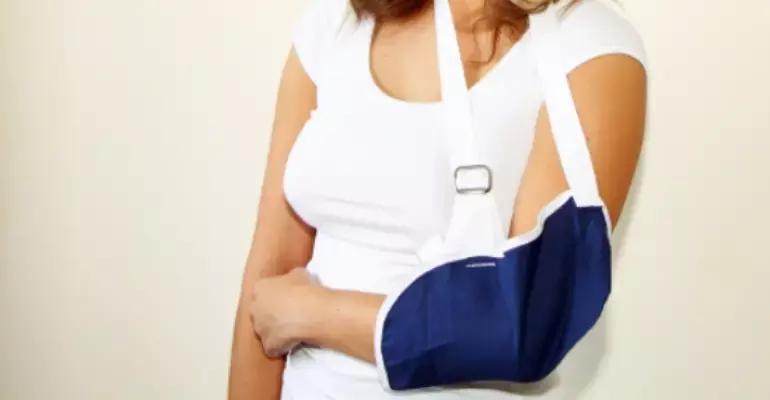- Home
- Medical news & Guidelines
- Anesthesiology
- Cardiology and CTVS
- Critical Care
- Dentistry
- Dermatology
- Diabetes and Endocrinology
- ENT
- Gastroenterology
- Medicine
- Nephrology
- Neurology
- Obstretics-Gynaecology
- Oncology
- Ophthalmology
- Orthopaedics
- Pediatrics-Neonatology
- Psychiatry
- Pulmonology
- Radiology
- Surgery
- Urology
- Laboratory Medicine
- Diet
- Nursing
- Paramedical
- Physiotherapy
- Health news
- Fact Check
- Bone Health Fact Check
- Brain Health Fact Check
- Cancer Related Fact Check
- Child Care Fact Check
- Dental and oral health fact check
- Diabetes and metabolic health fact check
- Diet and Nutrition Fact Check
- Eye and ENT Care Fact Check
- Fitness fact check
- Gut health fact check
- Heart health fact check
- Kidney health fact check
- Medical education fact check
- Men's health fact check
- Respiratory fact check
- Skin and hair care fact check
- Vaccine and Immunization fact check
- Women's health fact check
- AYUSH
- State News
- Andaman and Nicobar Islands
- Andhra Pradesh
- Arunachal Pradesh
- Assam
- Bihar
- Chandigarh
- Chattisgarh
- Dadra and Nagar Haveli
- Daman and Diu
- Delhi
- Goa
- Gujarat
- Haryana
- Himachal Pradesh
- Jammu & Kashmir
- Jharkhand
- Karnataka
- Kerala
- Ladakh
- Lakshadweep
- Madhya Pradesh
- Maharashtra
- Manipur
- Meghalaya
- Mizoram
- Nagaland
- Odisha
- Puducherry
- Punjab
- Rajasthan
- Sikkim
- Tamil Nadu
- Telangana
- Tripura
- Uttar Pradesh
- Uttrakhand
- West Bengal
- Medical Education
- Industry
Immediate Weight-Bearing may Improve Clavicle Fracture Rehabilitation: Study

A recent study published in the Journal of Orthopaedic Trauma revealed that immediate upper extremity weight-bearing as tolerated (WBAT) after surgical fixation is safe and does not compromise healing in patients with clavicle fractures. This research was conducted across three Level 1 trauma centers that marks a potential shift in postoperative care and rehabilitation strategies.
Traditionally, patients who undergo open reduction internal fixation (ORIF) for mid-shaft clavicle fractures have been advised to limit the weight-bearing on their affected arm to prevent hardware failure and ensure proper healing of the fracture. However, the outcome of this new study suggests that patients with concomitant lower extremity trauma can safely engage in WBAT using assistive devices like walkers or crutches immediately after surgery.
The retrospective cohort study focused on patients over 18 years who underwent ORIF for mid-shaft clavicle fractures and compared the individuals who allowed immediate WBAT with a matched cohort that adhered to non-weight-bearing (NWB) restrictions. The primary outcomes were to assess the safety of WBAT in terms of hardware failure, infection rates and the overall healing process.
The key findings from this study underline the safety and effectiveness of the immediate WBAT protocol. Among the 39 patients in the WBAT group, there was no significant increase in the risk of acute hardware failure that require surgical intervention when compared to their NWB counterparts. Both groups expressed a 2.5% incidence of such complications, with overall hardware failure rates showing no significant difference. All the patients in this study achieved fracture union regardless of their weight-bearing status, even the individuals who required revision surgery for acute hardware failure.
These results found beneficial implications for the management of clavicle fractures. The study challenges existing postoperative restrictions and opens the door for earlier rehabilitation and potentially quicker recovery times by supporting the safety of immediate WBAT. This could significantly improve patient outcomes in the individuals with additional lower extremity injuries by enabling more efficient use of assistive devices and promoting earlier return to daily activities. Overall, this research represents a leap ahead in improving the existing understanding of bone healing and rehabilitation by encouraging further research that could potentially revise the guidelines to reflect these insights into safe and effective postoperative care.
Source:
Frane, N., Watzig, B., Vohra, A., Deeyor, S., Hui, C., McKee, M., & Dehghan, N. (2024). Immediate Weight-bearing Through Walker or Crutches After Surgical Fixation of Clavicle Fractures in Patients With Lower Extremity Fractures: A Retrospective Cohort Study. In Journal of Orthopaedic Trauma (Vol. 38, Issue 4, pp. 227–233). Ovid Technologies (Wolters Kluwer Health). https://doi.org/10.1097/bot.0000000000002773
Neuroscience Masters graduate
Jacinthlyn Sylvia, a Neuroscience Master's graduate from Chennai has worked extensively in deciphering the neurobiology of cognition and motor control in aging. She also has spread-out exposure to Neurosurgery from her Bachelor’s. She is currently involved in active Neuro-Oncology research. She is an upcoming neuroscientist with a fiery passion for writing. Her news cover at Medical Dialogues feature recent discoveries and updates from the healthcare and biomedical research fields. She can be reached at editorial@medicaldialogues.in
Dr Kamal Kant Kohli-MBBS, DTCD- a chest specialist with more than 30 years of practice and a flair for writing clinical articles, Dr Kamal Kant Kohli joined Medical Dialogues as a Chief Editor of Medical News. Besides writing articles, as an editor, he proofreads and verifies all the medical content published on Medical Dialogues including those coming from journals, studies,medical conferences,guidelines etc. Email: drkohli@medicaldialogues.in. Contact no. 011-43720751


